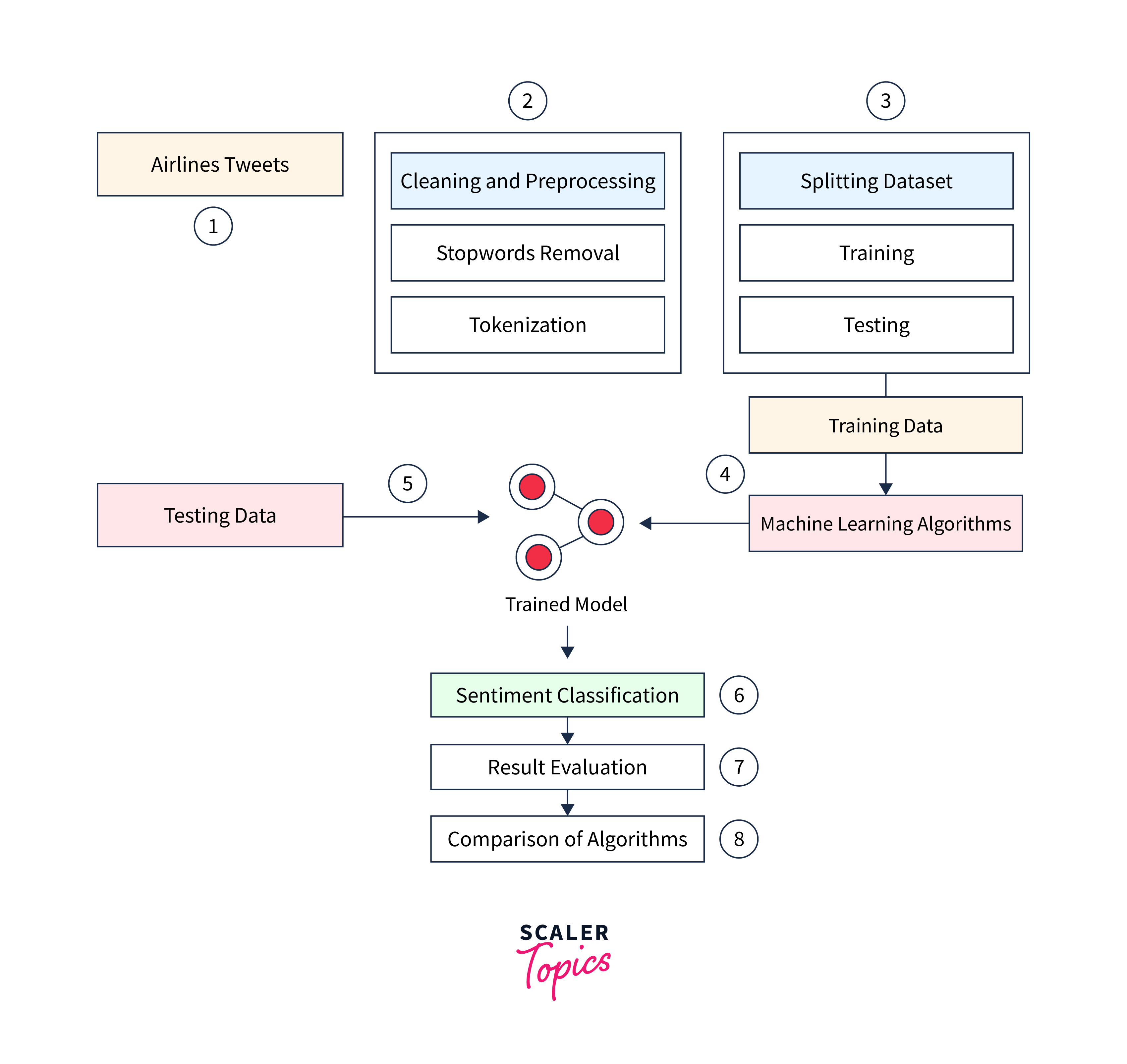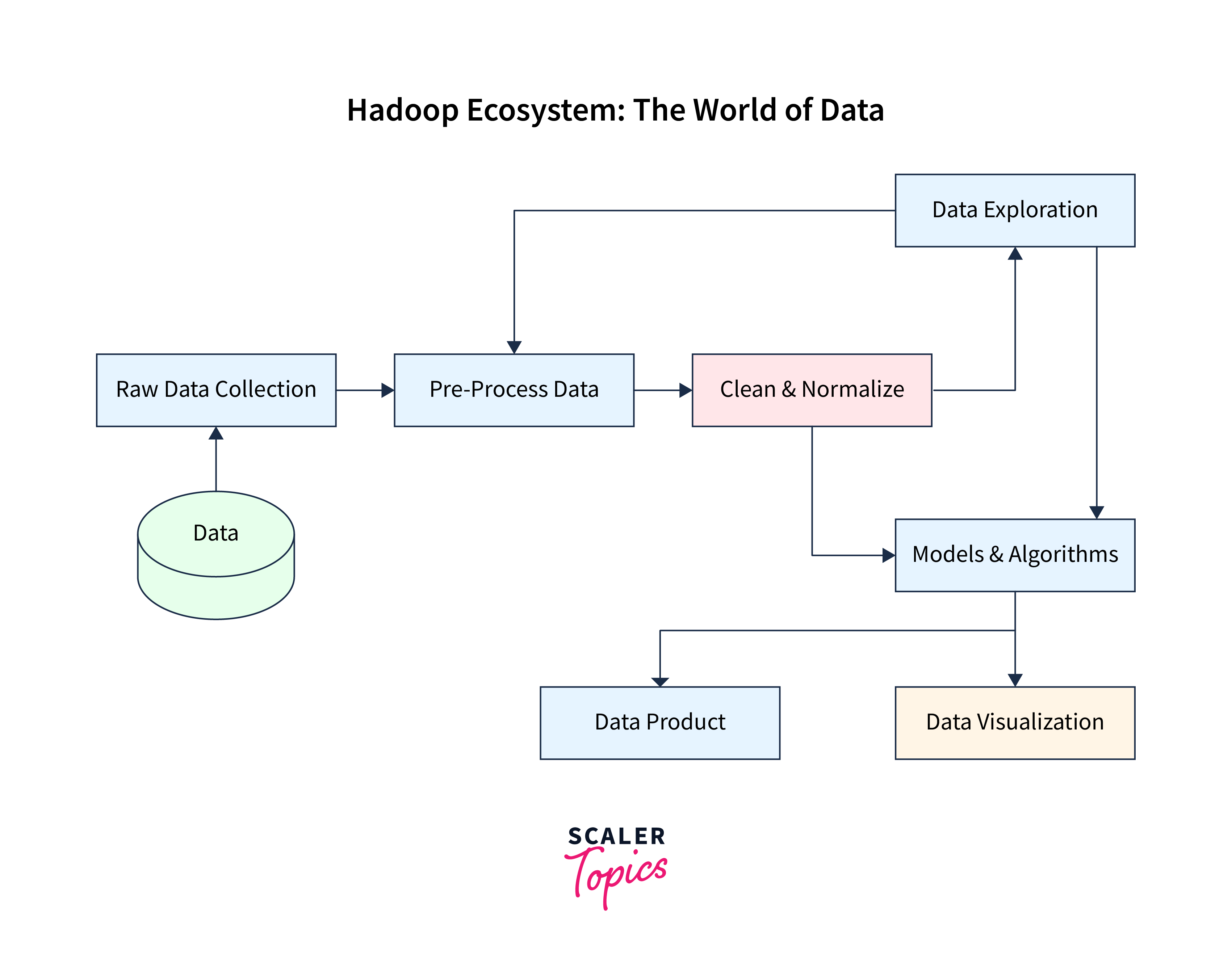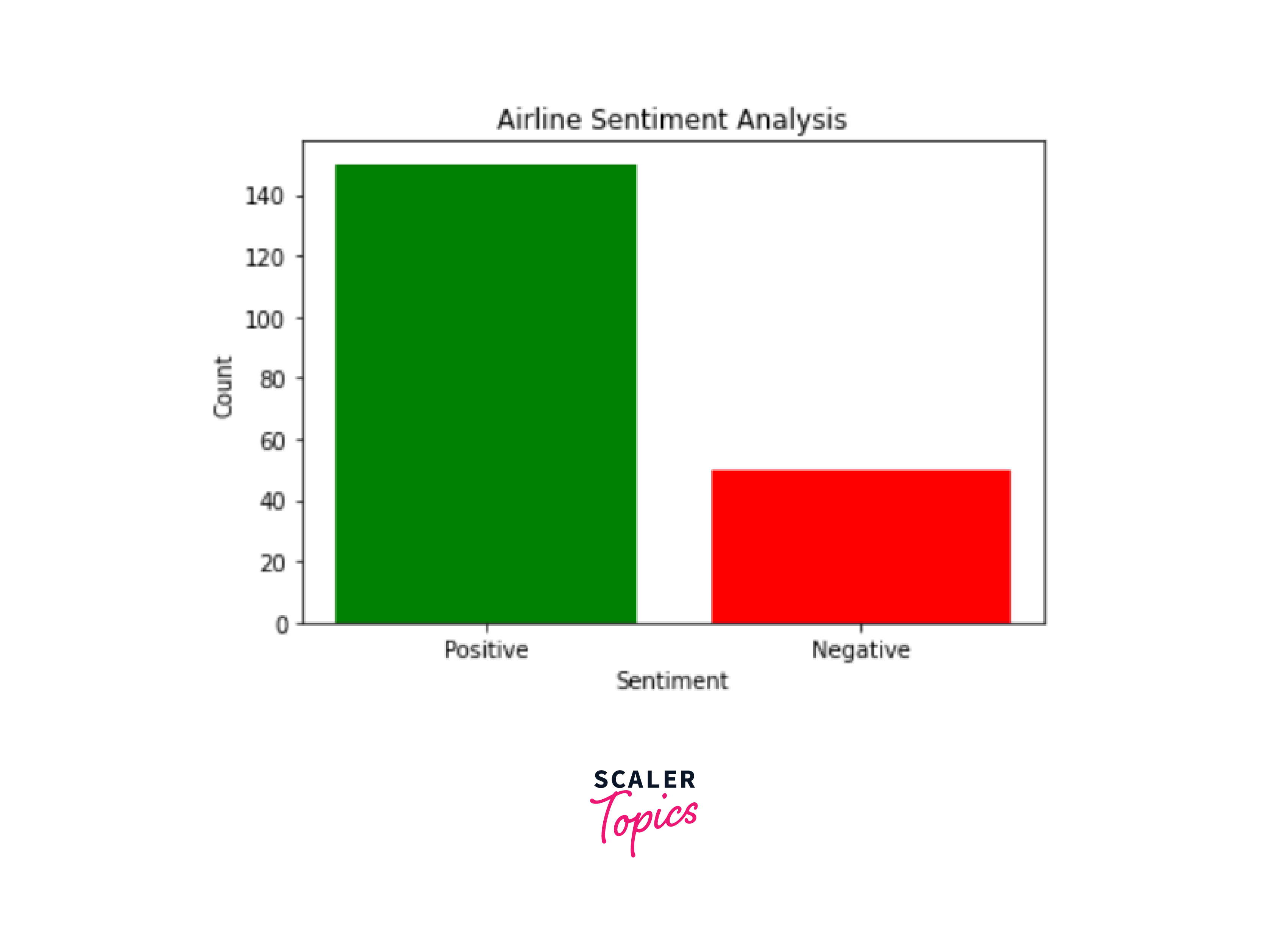Airline Sentiment Analysis Using Hadoop
Overview
Understanding passenger opinions is crucial in the aviation industry. Our study, "Airline Sentiment Analysis Using Hadoop and Python," employs cutting-edge tools to analyze passenger feelings by delving into consumer comments, tweets, and reviews. We harness the power of Python's versatile tools like PyFlink and PySpark, along with Hadoop's robust distributed computing capabilities. This approach equips airlines to enhance customer experiences, streamline operations, and make informed decisions.
What are we building?
Let us craete an Airline Sentiment Analysis project with Hadoop and Python, guiding you from prerequisites to outcomes, for both seasoned data engineers and beginners, to gain valuable hands-on experience in big data and sentiment analysis.

Prerequisites
Before diving into the project, it's crucial to have a solid understanding of the following topics:
- Hadoop.
- Python(https://www.scaler.com/topics/python/).
- Hive
- Sentiment Analysis
- PySpark/PyFlink
- Data Preparation
How are we going to build this?
- Data Collection: Collect airline-related data from Twitter, forums, and publicly available databases. HDFS, Hadoop's distributed file system, will be useful for storing this massive quantity of data.
- Data Preprocessing: Clean and preprocess the data to eliminate noise and extraneous information and tokenize it. For distributed data processing, you can use PySpark or PyFlink.
- Sentiment categorization: Build a sentiment categorization model using machine learning techniques.
- Data Storage: Save the processed data in Hive tables for convenient querying and analysis.
- Analysis and Visualization: Conduct sentiment analysis on the data using PySpark or PyFlink. Use Matplotlib or other data visualization packages to visualize the findings.
Final Output

Requirements
Sentiment analysis has become a useful tool for the aviation sector for data-driven decision-making. Using Hadoop and Python, we can extract important insights from consumer feedback, assisting airlines in improving customer happiness and operational efficiency.
1. Libraries and Modules:
a. Hadoop Ecosystem:
- Hadoop Distributed File System (HDFS)
- MapReduce
- YARN
- Hive
- HBase
- Pig
b. Python Libraries:
- Pyflink
- PySpark
- NLTK (Natural Language Toolkit)
- Scikit-learn
- Matplotlib and Seaborn
Building an Airline Sentiment Analysis system with Hadoop and Python is a large task. By following this step-by-step approach and using the power of Hadoop's distributed processing and Python's comprehensive libraries, you'll be well-equipped to extract important insights from client feedback, eventually increasing the performance and customer happiness of the airline sector.
Airline Sentiment Analysis Using Hadoop
Let’s get started with developing the application.
Data Extraction and Collection
First, collect data from various sources, such as Twitter, Facebook, and airline-specific consumer feedback forms. You may use Python tools such as Tweepy or BeautifulSoup to scrape data from social media. Make careful you acquire a broad sample with both positive and negative thoughts.
Architecture
Consider employing Hadoop's distributed file system (HDFS) for data storage and processing frameworks such as Apache Spark or PyFlink. This distributed design will efficiently handle massive amounts of data.

Load Data to HDFS
It's time to load your data into HDFS once you've collected and preprocessed it. To upload your data to HDFS, you can use tools like Apache Flume or Hadoop's command-line utilities. Organize the data in an organized manner to facilitate analysis.
Explanation:
- We use the hadoop fs command to copy the previously collected CSV file (airline_tweets.csv) to HDFS.
- Adjust the HDFS directory (/user/hadoop/) to your Hadoop setup.
Analysis with Hive Command
Hive is a powerful Hadoop ecosystem tool that lets you conduct SQL-like searches on your data. Create Hive tables and queries to retrieve important data. Natural Language Processing (NLP) packages in Python, such as NLTK or spaCy, may be used to analyze text sentiment within Hive queries for sentiment analysis.
Results
After performing your sentiment analysis queries, you will gain useful insights into client sentiments. Visualize the results with tools like Tableau or Matplotlib to clarify the data. You may develop visualizations such as word clouds or sentiment histograms to explain sentiment patterns effectively.
Output

In this step-by-step approach, we have explained the major components of doing airline sentiment analysis using Hadoop and Python. Following these gradual stages, you may quickly collect, process, and analyze customer feedback data to acquire important insights regarding airline attitudes. Remember to customize the tools and libraries to your individual project needs and to enhance your analysis for more accurate findings constantly. Sentiment analysis is a significant technique that airlines may use to improve customer happiness and service.
Testing
Testing is a crucial phase in any data analysis project to ensure the accuracy, reliability, and validity of your results.
- Testing Objectives and Criteria: This involves outlining what you aim to achieve through testing, such as verifying recommendation accuracy, ensuring data consistency, and assessing system performance and scalability.
- Preparing Test Data: Generate or collect representative test data that mirrors real-world scenarios. This data should encompass various user profiles, item interactions, and edge cases to assess recommendation quality comprehensively.
- Verifying Data Consistency: Cross-verify the analysis results against the original data sources or ground truth data to ensure data consistency.
- Testing Performance and Scalability: Assess the system’s performance and scalability by subjecting it to different loads, such as varying user volumes and concurrent requests.
What's next
In today's hyper-connected world, airlines face a unique challenge: understanding and improving customer sentiment. The feedback of the customer can be useful to get the insights, but a large quantity of data can be problematic. Enter Hadoop, Python, and many powerful libraries and frameworks to the rescue.
Hadoop - Your Big Data Backbone
Our airline sentiment analysis solution is built on Hadoop, an open-source distributed storage and processing technology. It excels in handling large volumes of data while also ensuring fault tolerance. Hadoop allows you to efficiently store and handle data from various sources, including consumer evaluations, social media, and polls.
Python - The Glue That Binds
Python is our preferred tool for developing this system. Its simplicity and broad ecosystem of libraries make it perfect for handling many elements of sentiment analysis. We'll use well-known Python modules such as PySpark and PyFlink to process and analyze data.
Sentiment Analysis - The Heart of the System
Our method is built around sentiment analysis, determining whether a text exhibits a positive, negative, or neutral attitude. We can use Natural Language Processing (NLP) approaches to do this. Python's NLTK (Natural Language Toolkit) and spaCy libraries provide pre-trained text analysis models and tools, making sentiment analysis a snap.
Conclusion
- Data Extraction and Collection: To provide a robust dataset for analysis, the initial phase entailed diligently collecting raw data from several sources.
- Architecture: To handle massive amounts of data effectively, we created a solid architecture by utilizing Hadoop's distributed processing capabilities and Python.
- Load Data to HDFS: A crucial step was to load our selected dataset into the Hadoop Distributed File System (HDFS).
- Hive Command analysis Hive, a potent data warehousing tool, enabled querying our data like SQL, speeding the analytical process. We were able to gain useful insights from our dataset with the use of customized Hive commands.
- Results: We obtained actionable insights into airline sentiment trends using in-depth sentiment analysis and data processing. These findings empower airlines to make data-driven decisions and enhance customer experiences.
